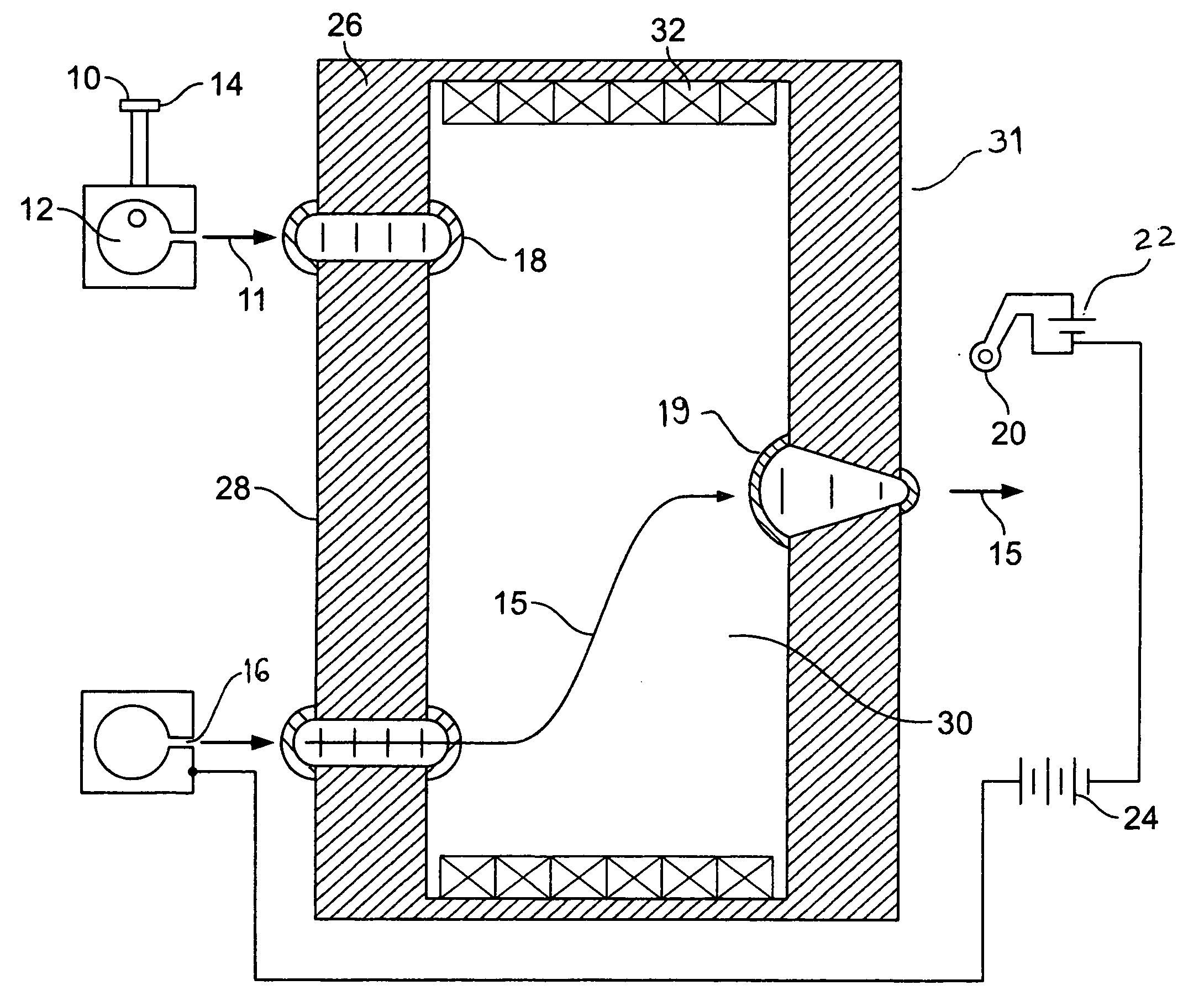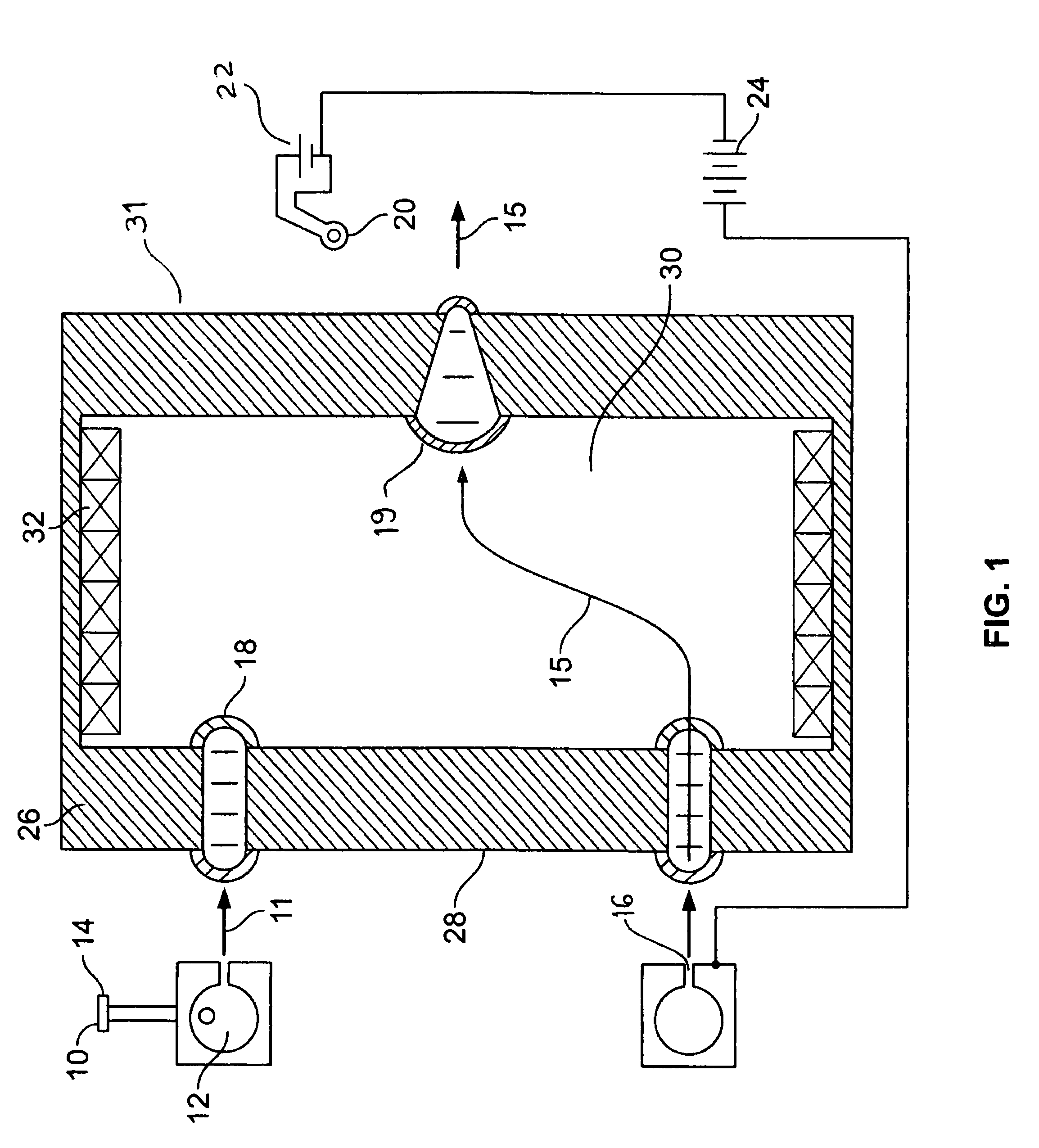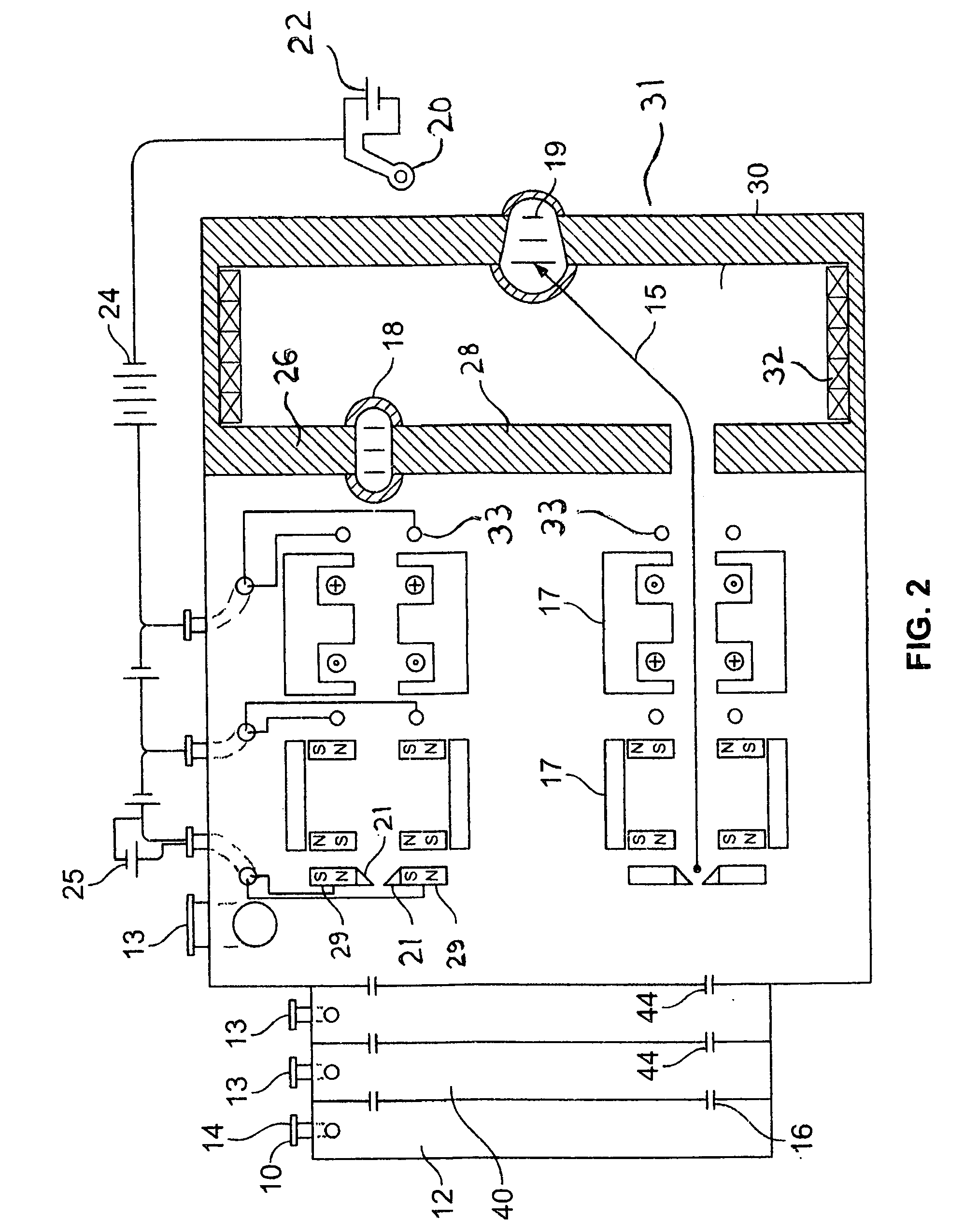Axial Hall accelerator with solenoid field
a solenoid field and accelerator technology, applied in the direction of plasma technique, mechanical equipment, machines/engines, etc., can solve the problem of limited prior art ion injection methods
- Summary
- Abstract
- Description
- Claims
- Application Information
AI Technical Summary
Benefits of technology
Problems solved by technology
Method used
Image
Examples
first embodiment
[0031]FIG. 1 reveals the present invention. Gas 10 is introduced into a plenum 12 through a gas input port 14. The gas 10 expands supersonically through an annular Laval type nozzle 16 forming an annular gas sheath 11 traveling through a vacuum on axis with a solenoid 31. Gas sheath 11 is ionized by electrons that transit through the Hall fields 19 and 18 from electron source 20 and 22 under the influence of acceleration power supply 24. The ions 15 are accelerated through the two Hall effect radial fringe fields 18 and 19 by the acceleration power supply 24. The first of two Hall fringe fields, entrance fringe field 18, is established between a return flux iron core 26 and a fringe core 28. Within the entrance fringe field 18 the ions' 15 original axial trajectory is bent as the ions are accelerated into energetic azimuthal orbits which then spiral though the solenoid field 30 maintained by solenoid windings 32. The axial extent of the solenoid is such that the ions are on axis whe...
second embodiment
[0032]FIG. 2 reveals the present invention. Gas 10 is introduced into Gas plenum 12 through gas input port 14 which expands supersonically through a directional annular convergent-divergent type nozzle 16 into a differential pumping chamber(s) 40, with vacuum pumping port(s) 13, where neutral gas atoms that are not traveling on axis are stripped away by a second, or more, collimating gas throats 44, resulting in a higher degree of axial collimation of the streaming gas. The anode structure is comprised of a pair of electrodes 21 and a bias power supply 25, which provides a voltage potential between the two electrodes 21. Electrodes 21 are on common Hall effect magnetic field lines established by Hall effect magnetic field structures 29 or 26 and 28. Intermediate magnetic field structures allow the electrode bias supply 25 to divert electrons to the more positive of the two electrodes 21 which then forms the anode of the acceleration power supply 24. The gas source 16 or 44 may alter...
PUM
 Login to View More
Login to View More Abstract
Description
Claims
Application Information
 Login to View More
Login to View More - R&D
- Intellectual Property
- Life Sciences
- Materials
- Tech Scout
- Unparalleled Data Quality
- Higher Quality Content
- 60% Fewer Hallucinations
Browse by: Latest US Patents, China's latest patents, Technical Efficacy Thesaurus, Application Domain, Technology Topic, Popular Technical Reports.
© 2025 PatSnap. All rights reserved.Legal|Privacy policy|Modern Slavery Act Transparency Statement|Sitemap|About US| Contact US: help@patsnap.com



